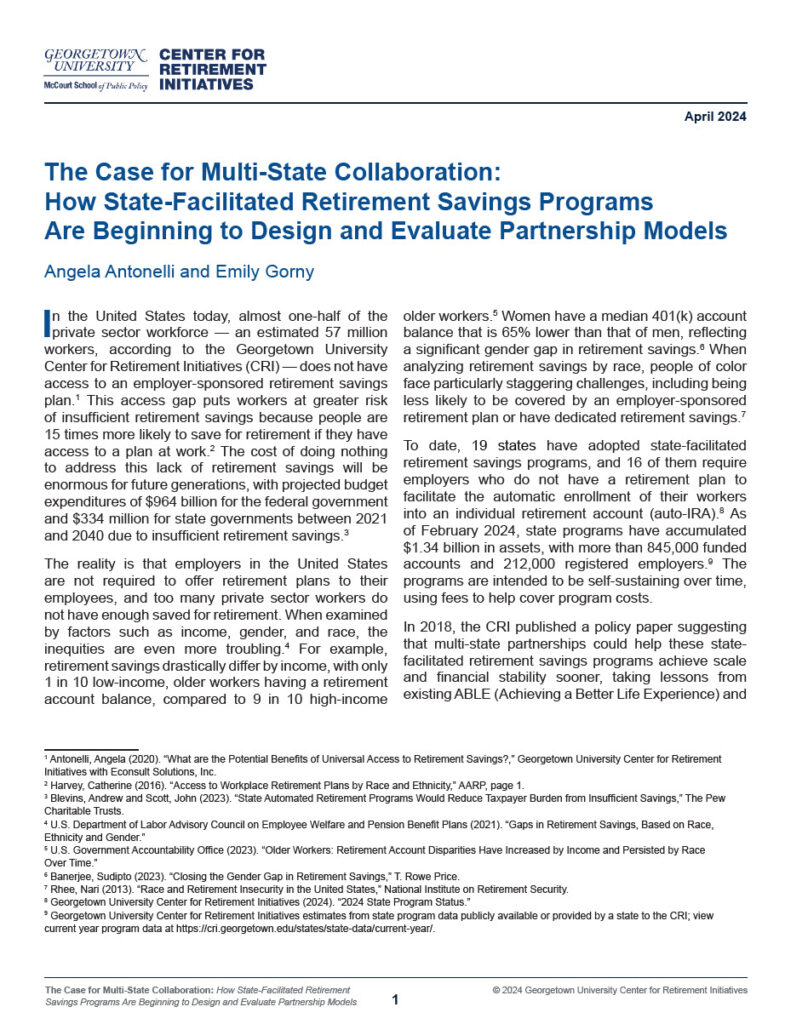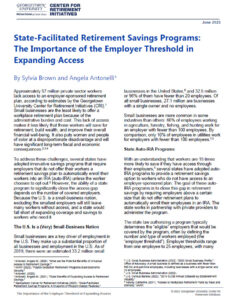State Reports and Briefs
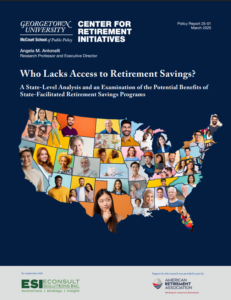
POLICY REPORT | MARCH 2025
A State-Level Analysis of Who Lacks Access to Retirement Savings and an Examination of the Potential Benefits of State-Facilitated Retirement Savings Programs
This report provides a national and 51 state-level (including DC) analysis of retirement access to employer-sponsored plans in the United States. The analysis reveals significant gaps in retirement plan access while demonstrating how state-facilitated retirement savings programs can effectively expand coverage for millions of Americans. Other state specific metrics, such as demographic trends related to the aging of the population, the economic and fiscal benefits to the state of adding new savers, and the projected growth in savings and retirement income for an auto-IRA saver eligible for the new Saver’s Match, are included. (View State-by-State Interactive Map). The report also examines the direct and indirect contributions of 3 state programs – CalSavers, Illinois Secure Choice and OregonSaves – to expanding access to retirement savings for workers in each of their states. (View Early Adopter State Profiles).
STATE BRIEF | APRIL 2024
The Case for Multi-State Collaboration: How State-Facilitated Retirement Savings Programs Are Beginning to Design and Evaluate Partnership Models
State-facilitated retirement savings programs have been successful in increasing access to retirement savings for private-sector workers and closing the access gap. As state programs have become more established, the creation of multi-state partnerships is the next evolution and will serve to strengthen these programs through scale and administrative efficiencies, benefiting states and savers alike. Looking to the future, newer program states are much more likely now to consider inter-state partnerships rather than create standalone programs. The early experiences of a few states to forge the first-in-the-nation multi-state partnership provide some initial best practice models for how states might consider such partnerships arrangements.
STATE BRIEF | JUNE 2023
State-Facilitated Retirement Savings Programs: The Importance of the Employer Threshold in Expanding Access
This issue brief highlights CRI research showing that the ability of a state program to significantly close the access gap depends on the number of covered employers. Because the U.S. is a small business nation, excluding the smallest employers will still leave many workers without access. As CRI research shows, setting the employer threshold as low as possible will do the most to close the gap. In addition, program implementation experience shows that the burden on employers is minimal and, as a result, more program states are now taking steps to cover many more of their smallest employers.
STATE BRIEF | MARCH 2023
Sound Governance and Fiduciary Best Practices for State-Facilitated Retirement Savings Programs
This issue brief summarizes the basics of what it means to be a fiduciary and outlines the relevant laws, scope of duties and responsibilities, and lessons learned from existing public programs and private sector employer-sponsored plans and its applicability to the more recently established state-facilitated retirement savings programs.
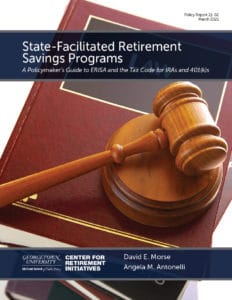
Policy Report 21-02 | March 2021
State-Facilitated Retirement Savings Programs: A Policymaker’s Guide to ERISA and the Tax Code for IRAs and 401(k)s
This paper provides policymakers with a primer about ERISA and the Tax Code, how these federal laws and their regulations pertain to IRAs and 401(k)s, and what this means for state-facilitated retirement savings programs. After reviewing the question of ERISA applicability to state auto-IRAs and an overview of the federal Tax Code and IRA rules, it explores how ERISA and the Tax Code rules apply to 401(k)s, including the new rules allowing states (and others) to possibly lower 401(k) costs by sponsoring group 401(k)MEPs and PEPs.
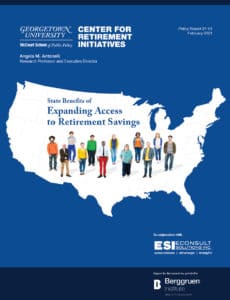
Policy Report 19-01 | May 2019
State Benefits of Expanding Access to Retirement Savings
This report provides state-level analysis of the benefits of expanding worker access to save for retirement through state-facilitated auto-IRA programs. This report follows CRI’s earlier research on the potential benefits of national universal access to retirement savings options for U.S. workers (See Policy Report 20-02). Included in the analysis are 51 state (and DC) fact sheets that provides information on key state specific metrics including demographic trends related to the aging of the population, the size of the retirement savings access gap, the projected growth in savings with an auto-IRA program, and the economic and fiscal benefits to the state of adding new savers. (See State-by-State Interactive Map)
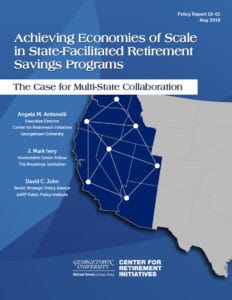
POLICY REPORT 19-01 | MAY 2019
Achieving Economics of Scale in State-Facilitated Retirement Savings Programs: The Case for Multi-State Collaboration
This final report updates and replaces CRI Working Paper 18-02, published in June 2018. This report outlines several models, based on a multi-state or regional approach, that should be explored for how states can work together to serve more than one state. Although individual states can establish their own state-sponsored retirement savings programs, the consideration of interstate arrangements offers opportunities for states to explore how they can achieve economies of scale to help minimize costs while significantly expanding access to retirement savings options.

